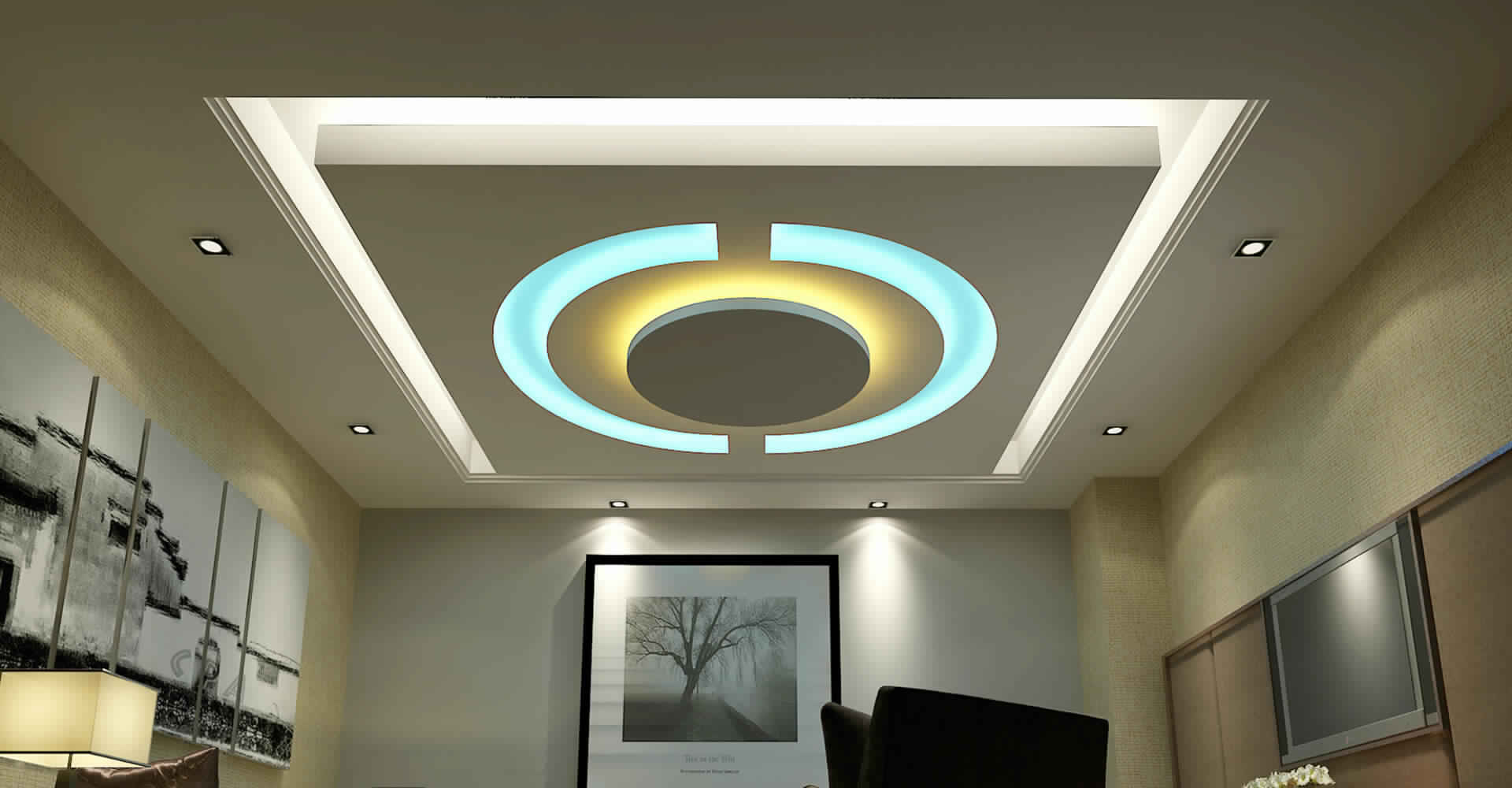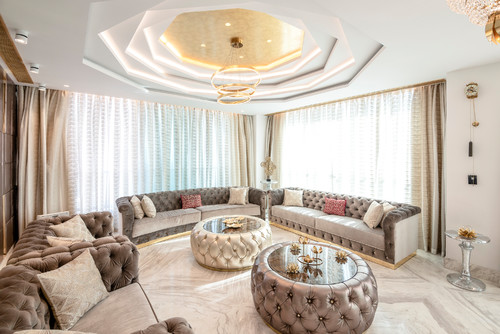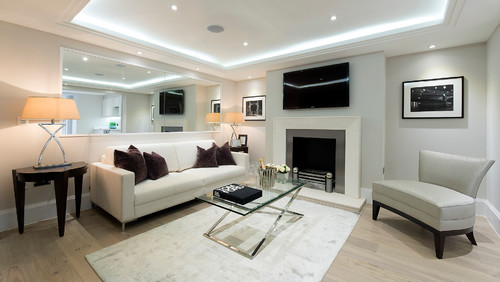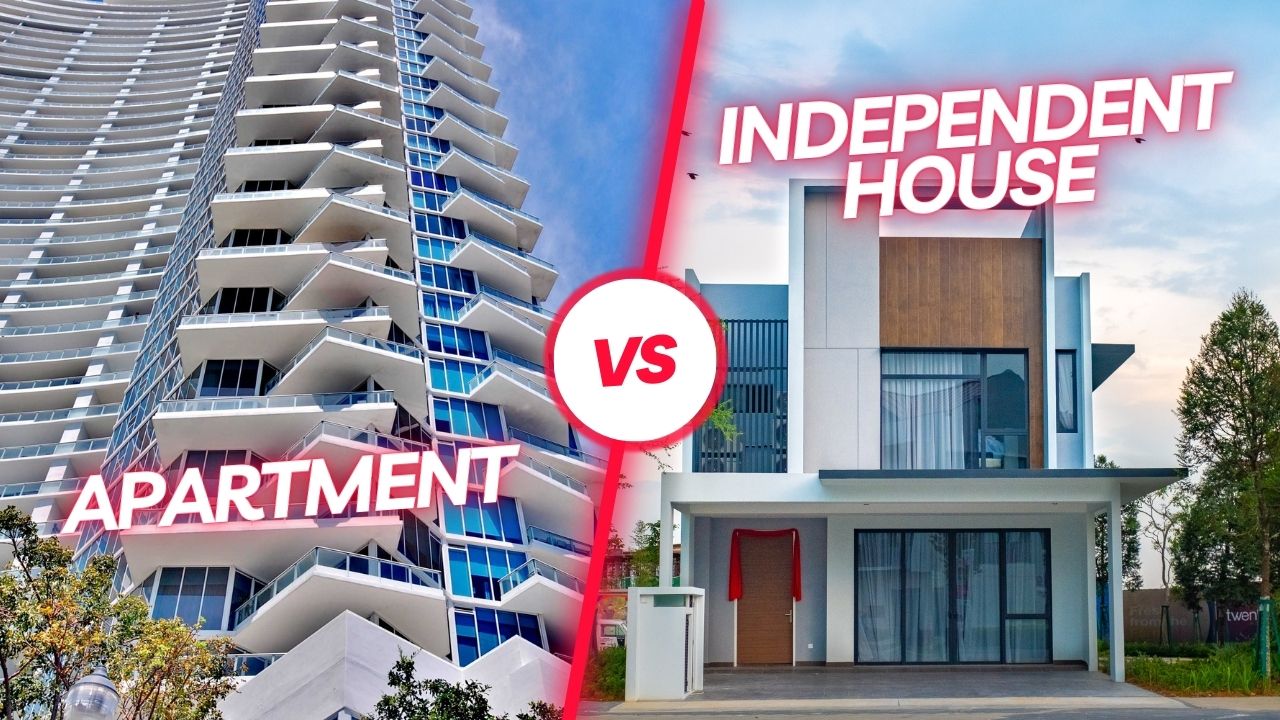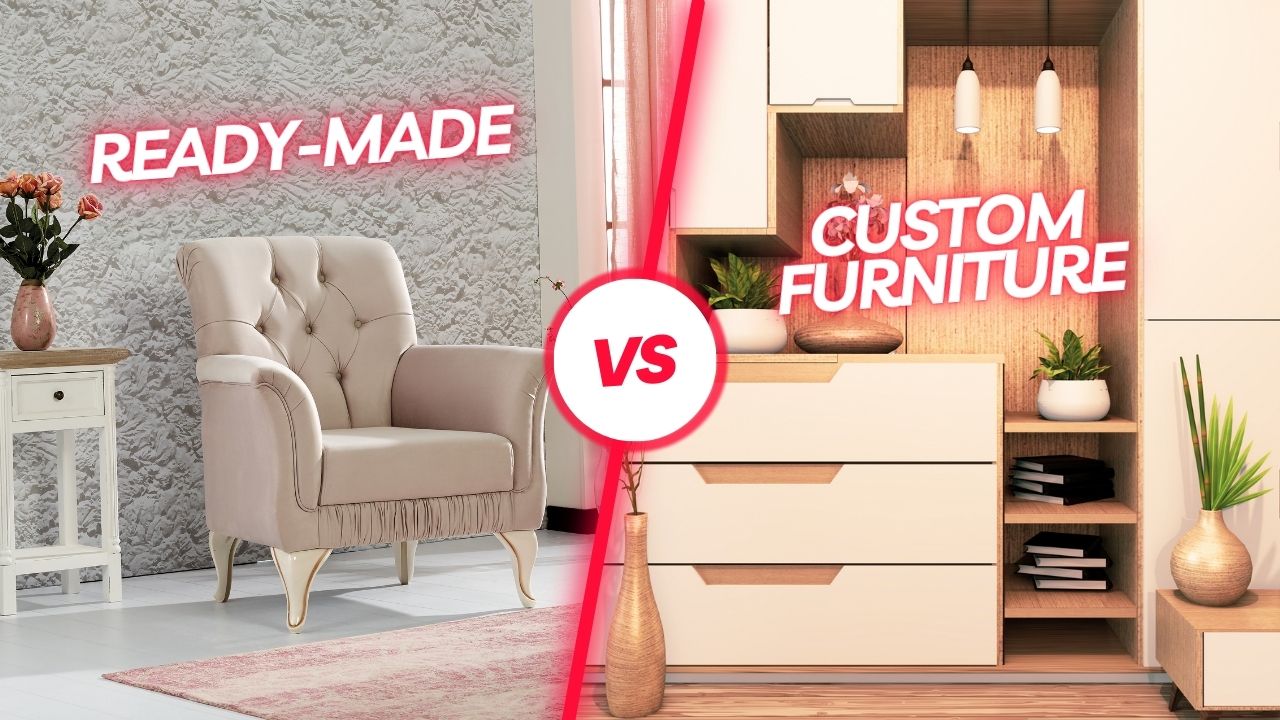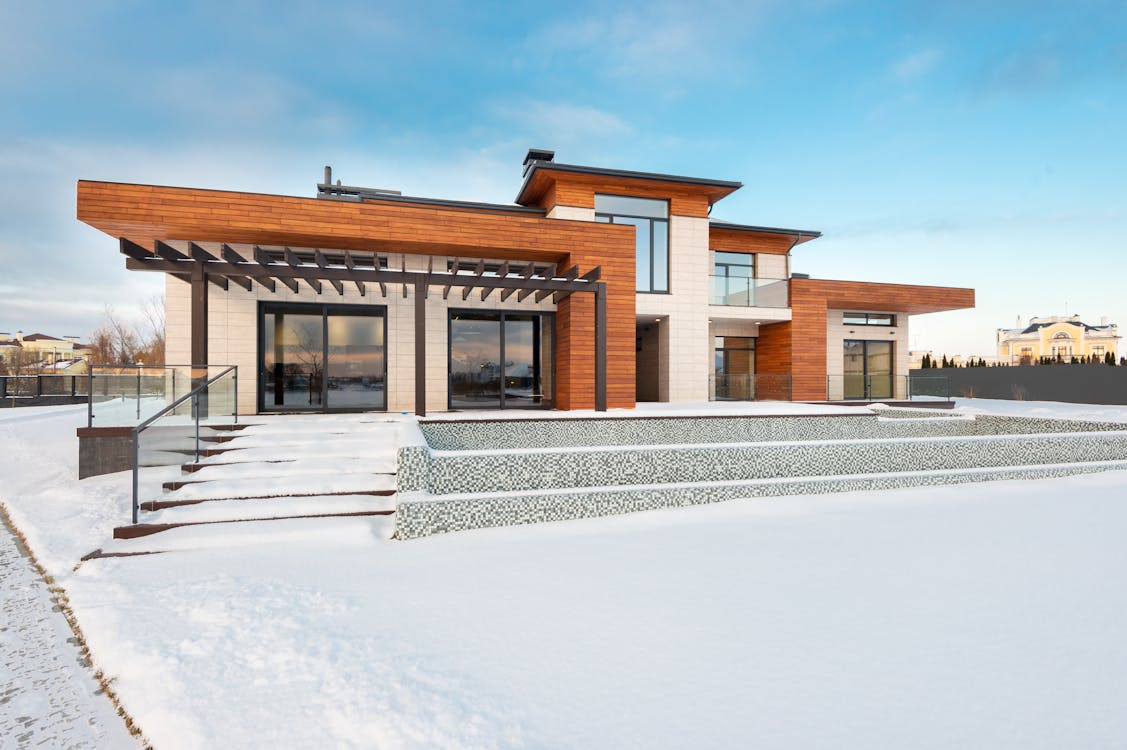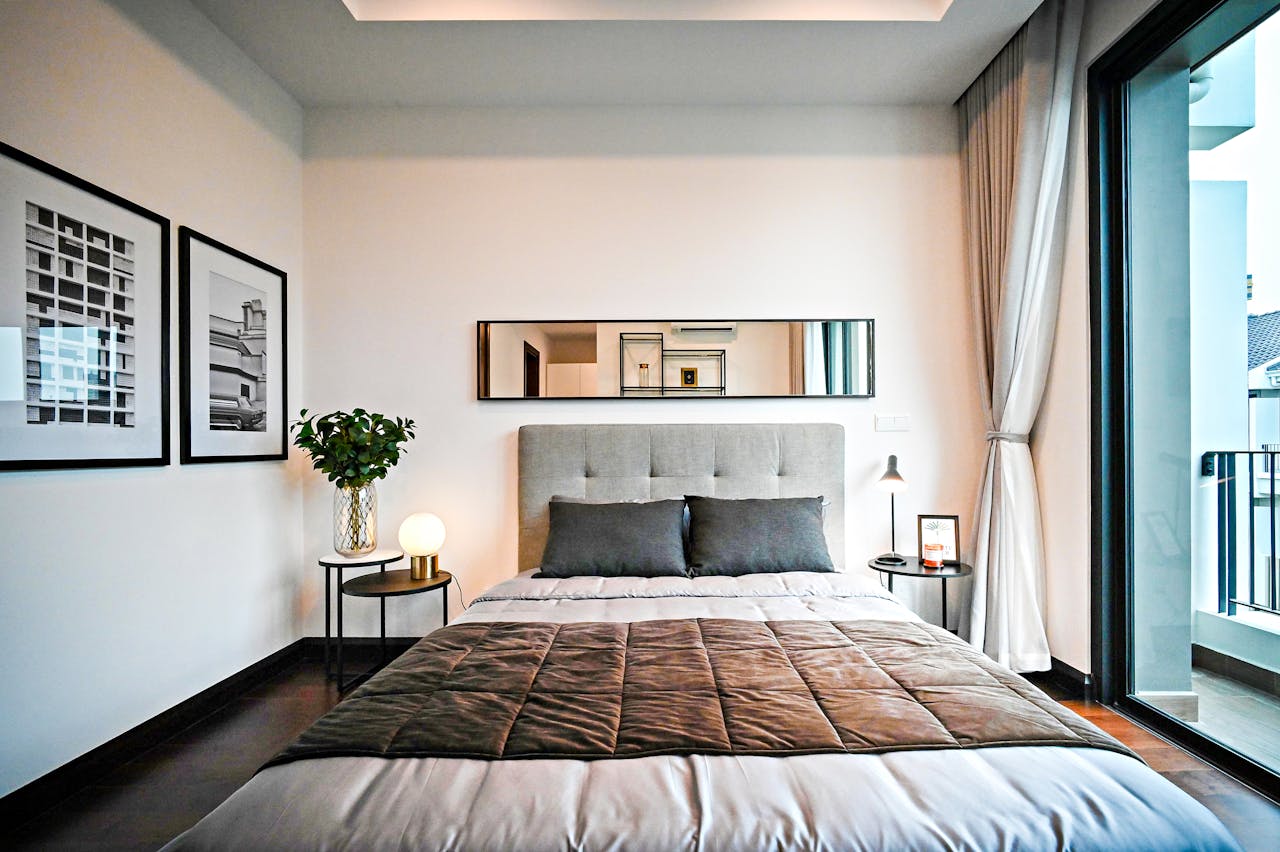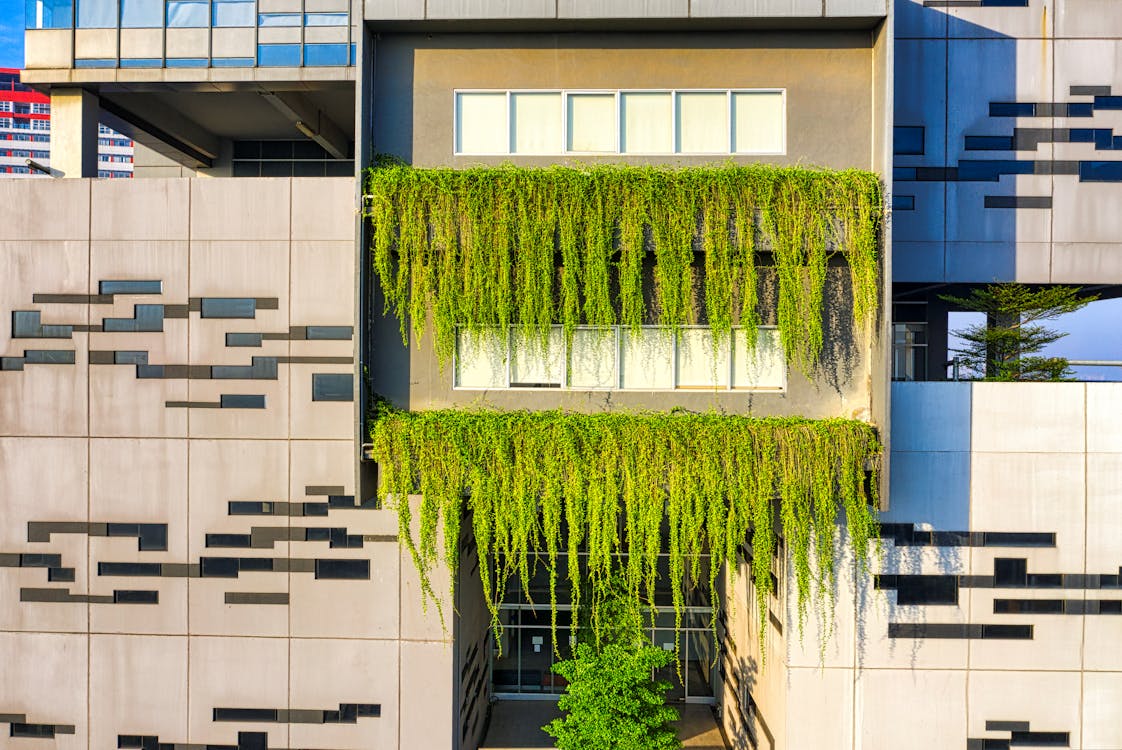False ceilings are interior design elements that can change the dynamics of the space through their design. Not only does it add to the aesthetics of the space, but it also aids in concealing hideous wiring, pipeline, ducting, etc. These ceilings can add a focal element to your space, introduce art, play with lighting, and so on. Depending on the design of the false ceiling, a tone could be set for the interiors.
There is an array of false ceiling materials that can be used to install a ceiling. One can use a combination of materials like gypsum false ceilings or POP ceiling materials to create an intriguing design. Following is our comprehensive false ceiling guide, which talks about the concept, purpose, process, materials, costs, etc., of a modern false ceiling:

Photo by Ownby Design - Search bedroom pictures
Understanding the concept of False Ceiling
False ceilings are faux, secondary or dropped ceilings suspended from the actual ceiling through metal or wooden frames. They add to the aesthetics by the play of levels of surfaces. The minimum distance between the actual ceiling and false ceiling is usually 8 inches. These modern false ceiling designs can be installed using various false ceiling materials and finishes.
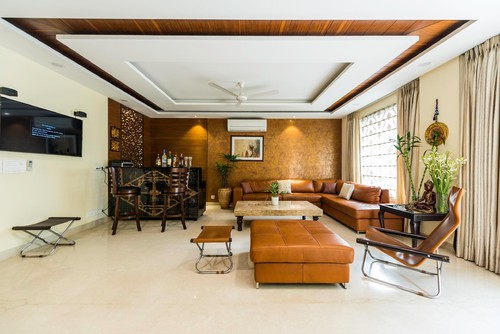
Photo by Vijay Kapur Designs - Search living room design ideas
Purpose of False Ceiling
In addition to adding to the aesthetics and concealing the services, false ceilings for homes serve multiple purposes:
- Thermal insulation
- Soundproofing
- Improving acoustics for home theatres
- Ambient lighting
- Fire resistance
- Concealing unsightly wiring and ducts
Styles of False Ceiling
Here are some popular types of false ceilings to consider:
- Single Layered:
A single layer is consistently laid below the actual ceiling. These do not overwhelm the spaces and go very well with the minimalistic décor. The minimalist style gives a blank canvas for ample effects and finishes. It pairs well with affordable false ceilings and clean false ceiling design ideas.

Photo by StudioLAB - More living room photos
- Multi-Layered:
These help break the continuity and monotony of the ceiling by adding a play of levels. These can be installed using a combination of materials and finishes to enhance the overall decor. It is suitable for larger spaces and works well with acoustic false ceilings for improved sound management.
Photo by Viaanca Interiors - Search living room design ideas- Plus-Minus:
This multidimensional style is incorporated to create a ton of drama by articulating the surfaces. These are a good way to add ornamentation to your ceilings. To be able to create an adequate effect, this ceiling is preferred for larger spaces. It’s perfect for adding a touch of luxury to false ceilings for offices and homes.
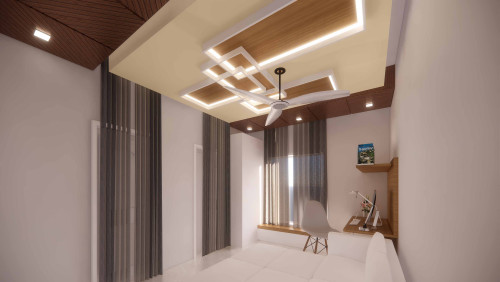
Photo by Studio Singh plus Partners - Search home design pictures
- Coffered:
Coffered false ceilings (just like a coffered grid) are composed of squares or boxes, thus adding to the drama of the space. This multidimensional style bestows an illusion of higher ceilings to the space. Coffered ceilings pair beautifully with backlit panels, enhancing the modern false ceiling design.
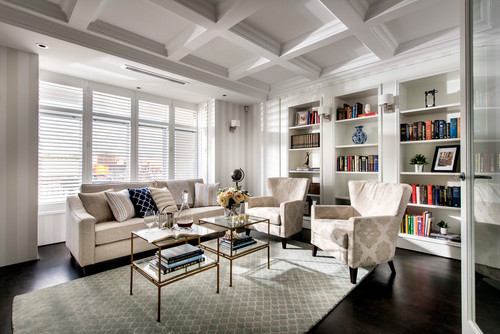
Photo by Webb & Brown-Neaves - Search living room pictures
Lighting in False Ceiling
The aesthetic quality of a false ceiling design can be enhanced with the help of various types of lighting fixtures to suit the design and aesthetic quality of the interiors. The different types of light fixtures that compliment false ceilings are -
- LED recessed lights for sleek illumination
- Cove lighting for indirect ambient light
- Backlit panels for a soft glow
- Task lighting for functional space
Photo by Emblem Furniture - More living room photos
Pros and Cons of False Ceiling
False ceilings, however versatile,
come with their set of pros and cons, which are discussed as follows –
Pros:
- These are easy to install
and help in achieving an overall smooth and consistent surface.
- Allows creative lighting options, like modern false ceiling designs.
- It enhances thermal and sound insulation and is ideal for acoustic false ceilings.
- Conceals the unpleasant sight of wiring and service ducts quite well.
Cons:
- The biggest disadvantage of false ceilings is that they can
harbour pests, leading to a breeding ground for them.
- Since it is also known as a dropped ceiling, it reduces the overall height of the room. Therefore, the choice to install a ceiling should be given due consideration.
- While it conceals the services perfectly, it delays the detection of any issue in the services a little.
Discover the pros and cons of top ceiling materials. Explore 7 Popular False Ceiling Materials for Homes
Materials Used
There are a lot of materials that can be used to install and finish the false ceilings. Depending on one’s budget and design aspirations, one can choose a material or combination of materials to create an interesting false ceiling. Some of the most popular false ceiling materials are –
Gypsum boards – A lightweight, fire-resistant option suitable for modern designs.
POP (Plaster of Paris) – Affordable and customizable for ornate designs.
PVC – Durable and water-resistant, ideal for false ceilings for homes in humid areas.
Metal – Adds an industrial, chic look to false ceilings for offices.
Fabric or Fibre – For acoustic and aesthetic versatility.
Wood or Timber – Adds warmth and natural appeal.
Make the right choice for your home’s false ceiling. Explore our expert analysis: Gypsum vs. POP: Choose the Best Ceiling for Your Home.
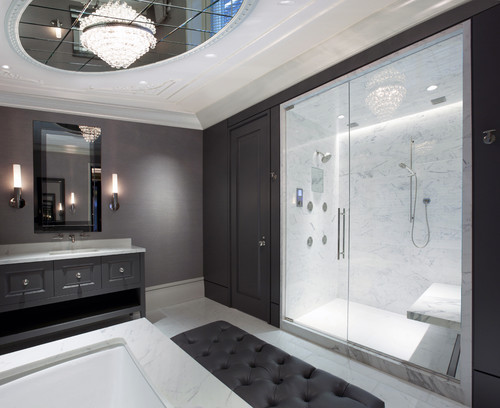
Photo by dSPACE Studio Ltd, AIA - More bathroom photos
Process of installing a False Ceiling
While the process of installation of the false ceiling might differ a little across different materials, the general steps are as follows
- Marking and levelling the ceiling.
- Fixing frames for support.
- Installing wiring and ducts.
- Applying chosen false ceiling materials.
- Finishing with sanding, painting, or texturing.
- Installing modern lighting fixtures.
And Voila! There you have your false ceiling.
Costing
While all the aspects are important
to lead you to a decision, cost is one of the most vital factors to consider. Costing can help decide the material, guide the design, finishes,
etc. The overall cost of a false ceiling is dependent on the following factors –
1. Area of the space
The overall cost of the
false ceiling depends on the total area where the false ceiling has to be
installed. The overall cost can be gathered from the per sqft cost.
2. Design
The complexity of design
would determine the labour and time required to achieve the finished surface. Therefore,
it is a primary element when it comes to cost.
3. Availability and quality of
Material
The easy availability of
materials ensures no added logistics cost. Therefore, one should check the
local availability of material before choosing the final material. Moreover,
the cost differs based on the type and quality of the material selected.
4. Quality of work and Labour
charges
The cost can vary depending on the quality and finish one wants for their false ceiling. For fine
work, one needs to hire skilled labour, thus escalating the cost a little.
5. Additional and Contingent
costs
Like anything, the additional and contingent expenses should be kept in mind. These could include the cost of fixtures, finishes, cutting, repair work, etc.
The average cost of false ceilings
for a few materials are as follows –
- Gypsum – ₹ 75 to 150 per sqft
- Wood – ₹ 400 to 550 per sqft
- POP – ₹ 45 to 120 per sqft
- PVC – ₹ 35 to 80 per sqft
- Glass – ₹ 450 onwards
- Fibre – ₹ 65 to 450 per sqft
- Fabric – ₹ 400 onwards (Will vary
based on the fabric chosen)
- Metal – ₹ 90 onwards
* Please note that the cost mentioned is approximate and subject to change depending on current rates, location, dimension, design, brand considerations, the material chosen, etc. Cost is subject to change based on the region and availability. It includes material, labour, and installation costs.
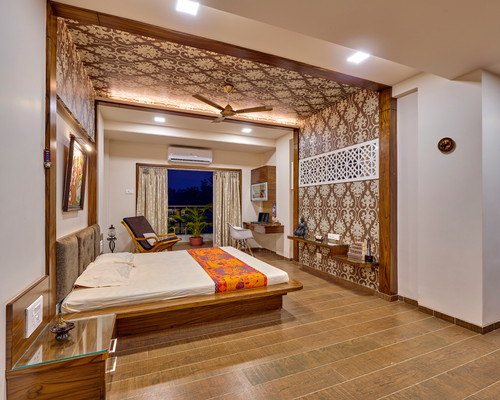
Photo by CULTURALS INTERIOR DESIGNERS - Search bedroom design ideas
Bonus Tips for False Ceilings
- Keep the design balanced to complement the room's décor.
- Opt for professional installation for durable, affordable false ceilings.
- Combine materials for unique effects, like POP ceiling materials with wood.

